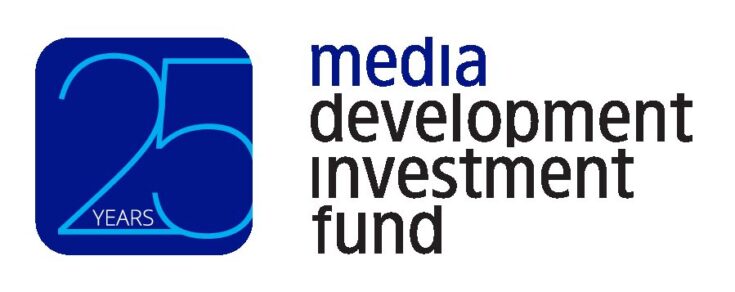By Kevin Brockland, Principal Investment Officer.
Over 25 years, we have invested in hundreds of projects with well over 100 media organizations. The companies we have invested in span stages and business models, but a common feature of many is that they haven’t created iterative processes around planning and budgeting.
Depending on the stage of a company, what an appropriate process looks like will vary based upon the specific characteristics of its development, business model and operating environment. Although there is no one-size-fits-all, there are general frameworks that can be modified for any media’s circumstances. A properly run process will ensure a more efficient use of capital and improved responsiveness, which will lead to better growth and margin in the long run.
Building a roadmap
Fundamental to our investment philosophy and our mission to support media viability is the objective of bringing value to media companies that goes beyond providing capital. One of the critical areas we have identified – and perhaps the area where we can make the biggest impact – is the process of planning and budgeting.
Since there is no one-size-fits-all approach to planning, how do we deliver value to media? Let’s look at the basic framework.
Key considerations
Company stage – How young or mature a company is will have a significant impact on what type of process is appropriate. A start-up won’t have processes that are as sophisticated as those of a large, mature organization. Not only would this be too time-consuming for a company with scarce resources, but also, because of the level of uncertainty in the market, it isn’t feasible to be so specific. This means that when we work with young media companies, we work with the founders / management to tailor capacity building that is appropriate for the stage of development of the organization.
Positioning in the market – Uncertainty is the nemesis of planning and the larger that foe, the less you are able to plan too far into the future. As a key adjustment factor, we must address the question: “Where do you see the organization in [insert time frame]?”. Without a guiding light for where you want to be, it’s impossible to design a roadmap to get you there. This is an existential question for any organization and should be addressed on a regular basis, as the answer is likely to change over time.
How to implement
Milestones and OKRs – Working backwards from the endpoint goal to the starting point of where the company is at today, we work with companies to define the periodic milestones and Objectives and Key Results (OKRs) that will signal to the company whether or not they remain on track. To extend the analogy of a roadmap, the milestones and OKRs act as the street signs in order to tell you if you remain on the proper route to your destination or whether you need to take a detour. It is critical to recognize that there is no straight line and detours may stack up. You may even change your destination entirely.
To get the most out of this process, a media company must be able to identify specific and measurable milestones and be able to clearly define why the milestone is necessary for achieving the ultimate goal. The challenge is not just defining the milestones but maintaining a workable set of milestones that should not exceed five. This is because as the number of milestones increases, the key purpose dissipates and that purpose has to remain the focus. A manageable number of milestones can flow down through the organization to different tiers without becoming an unmanageable flood.
The next step in advising on implementing planning involves OKRs. OKRs help align the team around what is important to the organization at all times, which drives efficiency and agility. Similar to milestones, a company should avoid defining too many OKRs. Every OKR should reflect realistic priorities achievable in short cycles that are still challenging. There should also be a clear understanding of what success means in relation to how each team needs to support others. Having OKRs on both a team and individual level is essential for company alignment.
Organization flow-through – The planning process is not effective when it is done in isolation from the teams that are tasked with achieving results. Without the top layer incorporating feedback and insight from lower down, an organization will risk not having buy-in, alienating key performers, and ultimately failing to achieve any of the defined objectives. Media organizations should avoid this well-known management failure at all costs.
Fully incorporating organizational flow-through starts with organizational design. Attention should be given to structuring an organization in a way that fits the culture and facilitates communication. This will provide a company with better insight into the pain points and gaps within the organization and in relation to customers and other stakeholders.
Outputs expected to be delivered would be (1) Product Roadmap, (2) Marketing Plan, (3) Sales Plan and (4) Human Resource plan. These components then would be rolled up into the numeric representation of the budget.
Feedback loops – The budget is intended to be a flexible tool. The logic behind establishing periodic milestones and short-cycle OKRs is to set expectations by which to measure performance over time and to generate learnings. For all companies, but especially for early-stage companies, this process helps test the original hypothesis. We make assumptions about what the results of actions will be and then we measure results against those assumptions. The only way a company can learn from results is to have feedback loops set in place.
Feedback loops vary greatly and depend on many conditions. Broadly speaking, a company should have feedback loops that collect external information (e.g., results of sales or marketing efforts) and internal information (financials, operating performance, coordination, etc.). These loops share data that helps the company update its planning and set the next round of milestones and OKRs.
Modifying the DNA
Habit of iteration – It should be clear by now that the process of planning and budgeting is not a one-off exercise and it is not simply a task to be done annually in a stuffy board room. To get the most out of planning it needs to be baked into the DNA of an organization that it is an iterative process.
The budget is a flexible tool and will evolve over time. The long-term objectives, the interim targets, the milestones and OKRs – none of these are fixed for life. Media operate in a dynamic business environment in which the only certainty is uncertainty. As such, they must be equipped with regularly updated learnings that can be reapplied in a process of continual improvement.
Why it matters
An effective planning and budgeting process will enable a company to improve several important areas of its operations.
Responsiveness – A company will be able to respond quickly to a changing environment. Over time, its ability to predict changes will improve, helping it to be proactive rather than reactive. This is not to say that planning is a panacea for everything that might challenge an organization, but it will equip the company with the tools it needs to make better decisions.
Capital efficiency – A media company operates with finite resources and needs to be as efficient as possible with the resources it has. Planning allows for greater focus on what is important and leads to a better allocation of resources that impact most on company objectives. In changing conditions, improved responsiveness helps a company to reprioritize resources more quickly, which improves efficiency and cash runways.
Insight – The learnings a media company gets from planning leads to a virtuous circle of better learnings that support an iterative process that builds over time. This in turn leads to improvements in product, value proposition, efficiency, profitability, and success more broadly.
The Bottom line
Building a business is incredibly challenging and the difficulties do not cease as the company grows, they simply change in size, shape, and scope. For many entrepreneurs and business leaders, the idea of planning and budgeting may feel like a Sisyphean task – a fruitless and unrewarding process that is repeated over and over. But this is a misperception that results from failing to implement a planning process that fits the specific needs of the media organization.
When implemented effectively, the results are clear: planning and budgeting help a media business to grow and improve. This is a win-win for MDIF and our investee partners.

This article is part of our series, ‘25 things we’ve learned’, marking MDIF’s 25th anniversary.
